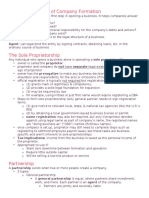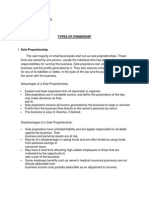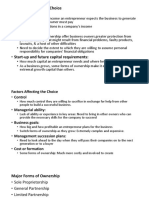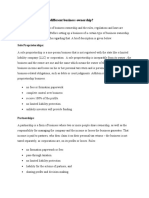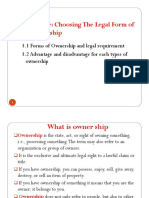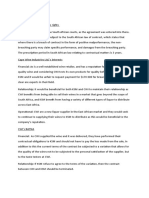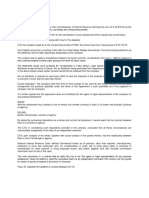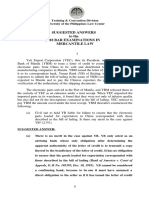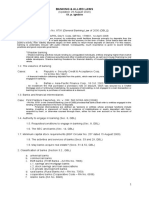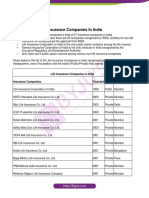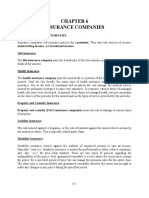Table 3.
1 summarizes the key features of the sole proprietorship, the partnership, the C corporation, the S
corporation, and the limited liability company.
TABLE 3.1 Characteristics of the Major Forms of Ownership
Sole
Characteristic Proprietorship
Definition
General
Partnership
Limited
Partnership
Limited
Liability
C
S
Corporation Corporation Company
A for-profit
business owned
A for-profit business jointly
One general
partner and one
An artificial
legal entity
and operated by
owned and oper-
or more partners
one person
ated by two or
with limited
more people
liability and no
separate
from
its owners
and
formed
under
state and
federal
laws
rights of
management
An artificial
legal entity
that
is structured
like
aC
corporation
but taxed by
the
federal
government like a
A business entity
that provides
limited liability like
a
corporation but
is
taxed like a part-
partnership
members
Ease of
Easiest form of
Easy to set up
File a certificate
formation
business to set
and operate. A
up. If necessary,
written partner-
acquire licenses
ship agreement
and permits,
is highly recom-
register fictitious
mended. Must
name, and
acquire an
obtain taxpayer
Employer ID
identification
number. If neces-
File articles
Must meet
of
all
of limited partincorporation criteria to
file as
nership with the
and other
an S
corporation.
secretary of state. required
Must file
reports
timely
Name must show with the
election with
secrethe
that business is a
tary of state. IRS (within
212
limited partnerprepare
months of
bylaws
first
ship. Must have
and follow
taxable
year).
written agreement, corporate
sary, register
and must keep
fictitious name.
certain records.
formalities
nership. Owners
are referred to as
File articles of
organization
with
the secretary of
state. Adopt
operating agreement, and file
necessary reports
with the
secretary
of state. The
name
must show it is a
limited liability
company.
Owner's personal liability
Unlimited
Unlimited for
general partners,
Limited
Limited
Limited
Limited
limited for
limited partners
(continue
d)
�Sole
Proprietorshi
p
General
Partnershi
p
Limited
Partnershi
p
Limited
Liability
C
S
Corporation Corporation Company
Number
of owners
One
Two or more
At least one
gen- eral partner
and any number
of limited
partners
Any number
Tax liability
Single tax: per-
Single tax: part-
Same as general
Double tax:
sonal tax rate
ners pay on
their
proportional
shares at their
individual rate
partnership
corporatio
n pays tax
and shareholders
pay tax on
dividends
distributed
Current
maxi- mum
tax rate
35%
35%
35%
Transferability
Fully transfer-
May require
Same as general
39%
corporat
e plus
35%
individual
Fully
of ownership
able through
sale or transfer
of company
assets
Ends on death or
insanity of
proprietor or
upon
termination by
proprietor
consent of
all partners
partnership
Dissolves upon
death, insanity,
or retirement of
a general partner
(business may
continue)
Same as
general
partnership
Cost of
formatio
n
Liquidity of
the owner's
invest- ment in
the business
Low
Moderate
Poor to average
Ability to
raise capital
Characteristic
Maximum
of 100 with
restrictions as to
who they
are
Single tax:
owners
pay on
their
proportional
shares at
individua
l rate
35%
One (A few
states require
two or more)
Single tax:
members pay on
their
proportional
shares at
individ- ual
rate
35%
Transferable
(but
transferable
transfer
may
affect S
status)
Perpetual life Perpetual life
Usually
requires
consent
of all
members
Moderate
High
High
High
Poor to average
Poor to average
High
High
High
Low
Moderate
Moderate
to high
Very high
High
High
Formation
No special steps
No written part-
Must comply
Must follow
Procedure
required other
nership agree-
with state laws
Must meet
formal
requirements
than buying nec-
ment required
regarding limited
essary licenses
(but
highly
advisable)
partnership
Must meet
formal
requirements
specified by
state
law
Continuity
of the
business
Chapter Review
same
procedures
as C
corporation,
then elect S
status with
IRS
Perpetual Life
specified by
state
law
�1.
2.
Discuss the issues that entrepreneurs should consider when evaluating different forms of
ownership.
The key to choosing the right form of ownership is to understand the characteristics
of each and know how they affect an entrepreneur's personal and business
circumstances.
Factors to consider include tax implications, liability expense, start-up and future capital
requirements, control, managerial ability, business goals, management succes- sion
plans, and cost of formation.
Describe the advantages and disadvantages of the sole proprietorship.
A sole proprietorship is a business owned and managed by one individual and is the
most popular form of ownership.
Sole proprietorships offer these advantages:
Simple to create
Least costly to form
Owner has total decision-making authority
No special reporting requirements or legal restrictions
Easy to discontinue
Sole proprietorships suffer from these disadvantages:
o Unlimited personal liability of owner
o Limited managerial skills and capabilities
o Limited access to capital
o Lack of continuity
3. Describe the advantages and disadvantages of the partnership.
A partnership is an association of two or more people who co-own a business for the purpose of making a
profit.
Partnerships offer these advantages:
o Easy to establish
o Complementary skills of partners
o Division of profits
o Large pool of capital available
o Ability to attract limited partners
o Little government regulation
o Flexibility
o Tax advantages
Partnerships suffer from these disadvantages:
o Unlimited liability of at least one partner
o Difficulty in disposing of partnership interest
o Lack of continuity
o Potential for personal and authority conflicts
o Partners are bound by the law of agency
4. Describe the advantages and disadvantages of the corporation.
A limited partnership operates like any other partnership except that it allows limited partnersprimarily
investors who cannot take an active role in managing the business to become owners without subjecting
themselves to unlimited personal liability of the company's debts.
A corporation is a separate legal entity and the most complex of the three basic forms of ownership.
To form a corporation, an entrepreneur must file the articles of incorporation with the state in which the
company will incorporate.
Corporations offer these advantages:
o Limited liability of stockholder
o Ability to attract capital
�Ability to continue indefinitely
Transferable ownership
Corporations suffer from these disadvantages:
Cost and time in incorporation
Double taxation
Potential for diminished managerial incentives
Legal requirement and regulatory red tape
Potential loss of control by the founders
Describe the features of the alternative forms of ownership, such as the S corporation, the
limited liability company, and the joint venture.
An S corporation offers its owners limited liability protection but avoids the double taxation of C
corporations.
A limited liability company, like the S corporation, is a cross between a partnership and a corporation and
offers the advantages of each. However, it operates without the restrictions imposed on an S corporation.
To create a limited liability company, an entrepreneur must file the articles of organization and the
operating agreement with the secretary of state.
A joint venture is like a partnership, except that is it formed for a specific purpose.
o
o
o
o
o
o
o
5.

